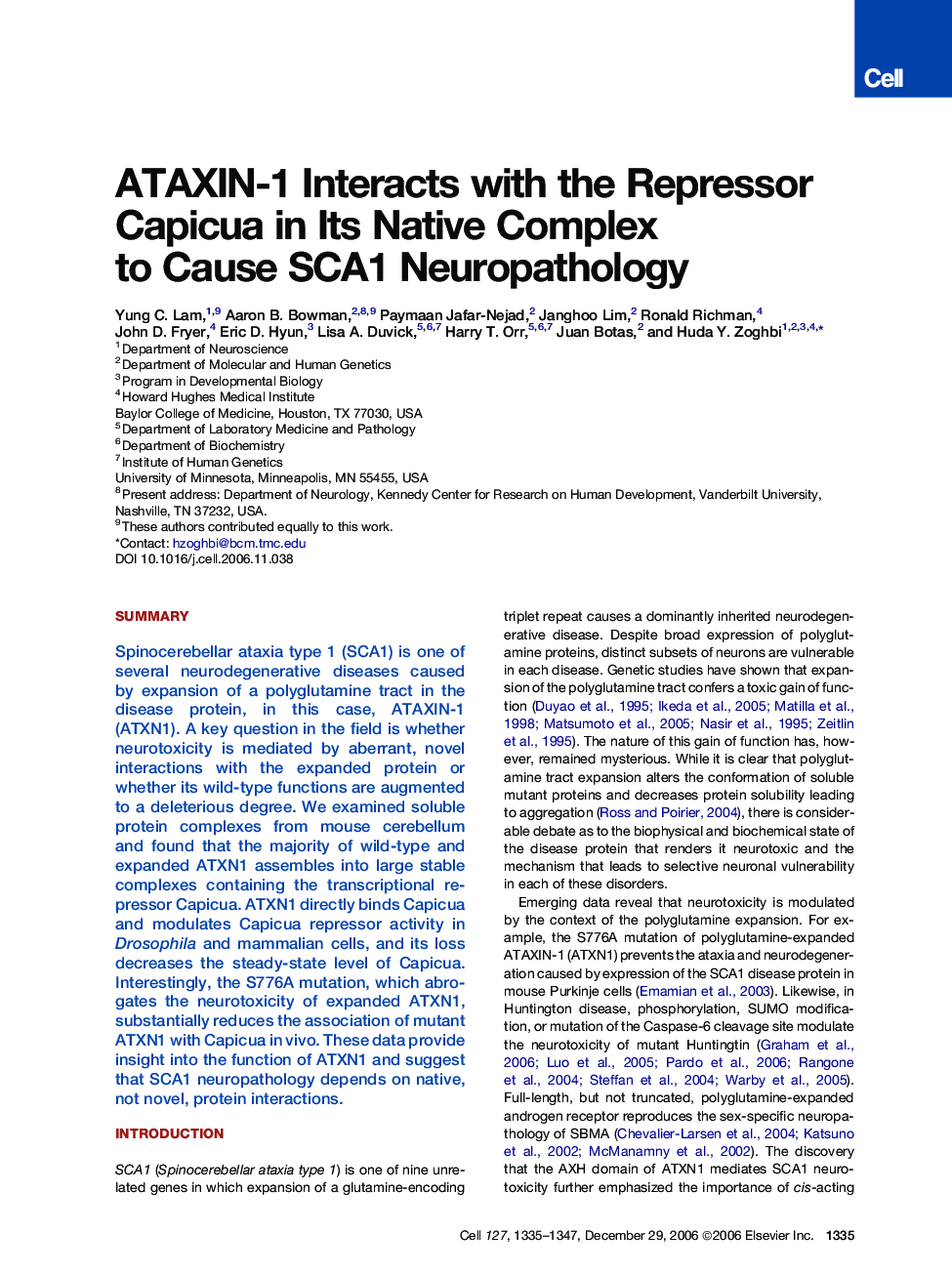| Article ID | Journal | Published Year | Pages | File Type |
|---|---|---|---|---|
| 2038215 | Cell | 2006 | 13 Pages |
SummarySpinocerebellar ataxia type 1 (SCA1) is one of several neurodegenerative diseases caused by expansion of a polyglutamine tract in the disease protein, in this case, ATAXIN-1 (ATXN1). A key question in the field is whether neurotoxicity is mediated by aberrant, novel interactions with the expanded protein or whether its wild-type functions are augmented to a deleterious degree. We examined soluble protein complexes from mouse cerebellum and found that the majority of wild-type and expanded ATXN1 assembles into large stable complexes containing the transcriptional repressor Capicua. ATXN1 directly binds Capicua and modulates Capicua repressor activity in Drosophila and mammalian cells, and its loss decreases the steady-state level of Capicua. Interestingly, the S776A mutation, which abrogates the neurotoxicity of expanded ATXN1, substantially reduces the association of mutant ATXN1 with Capicua in vivo. These data provide insight into the function of ATXN1 and suggest that SCA1 neuropathology depends on native, not novel, protein interactions.
